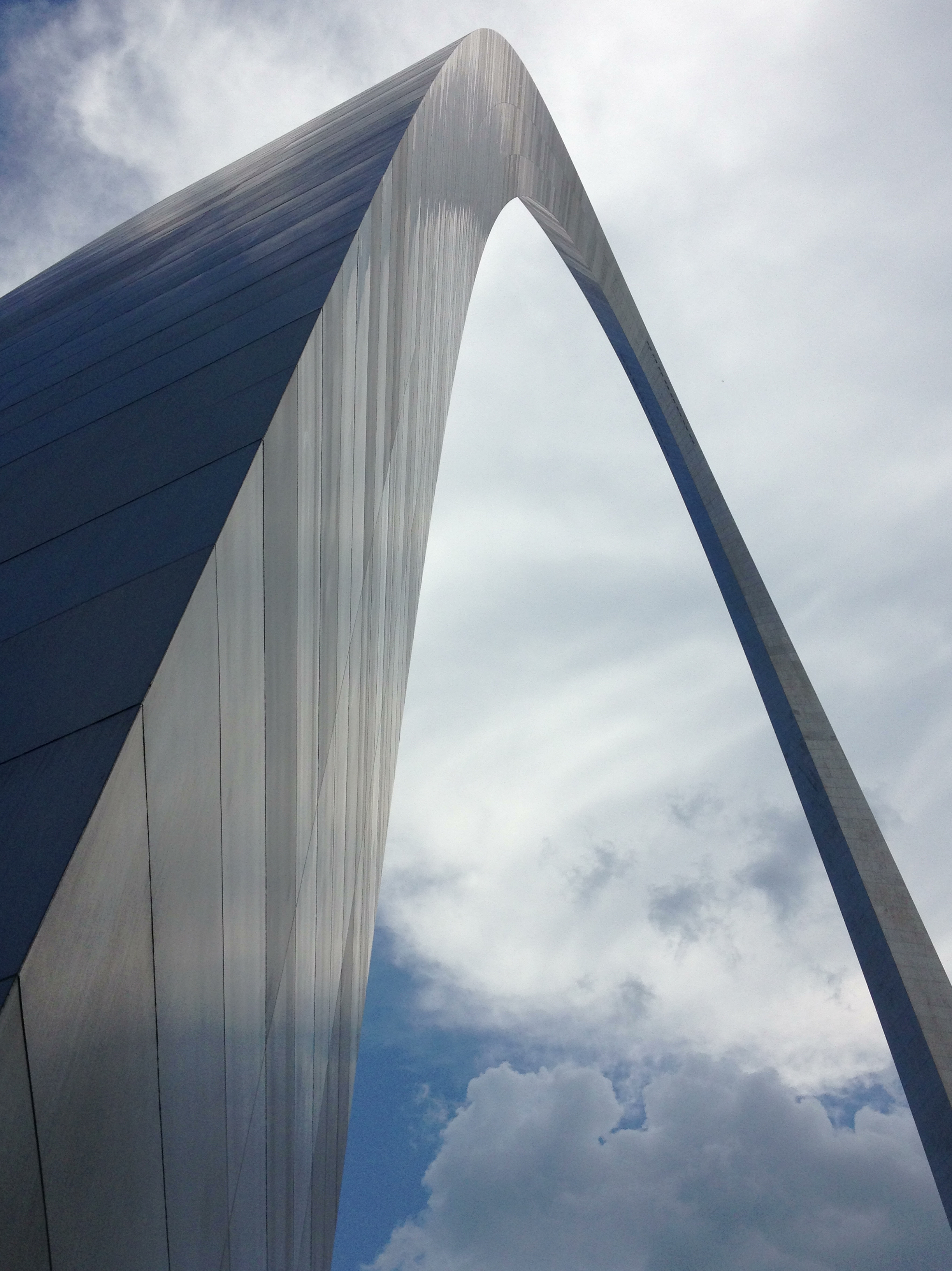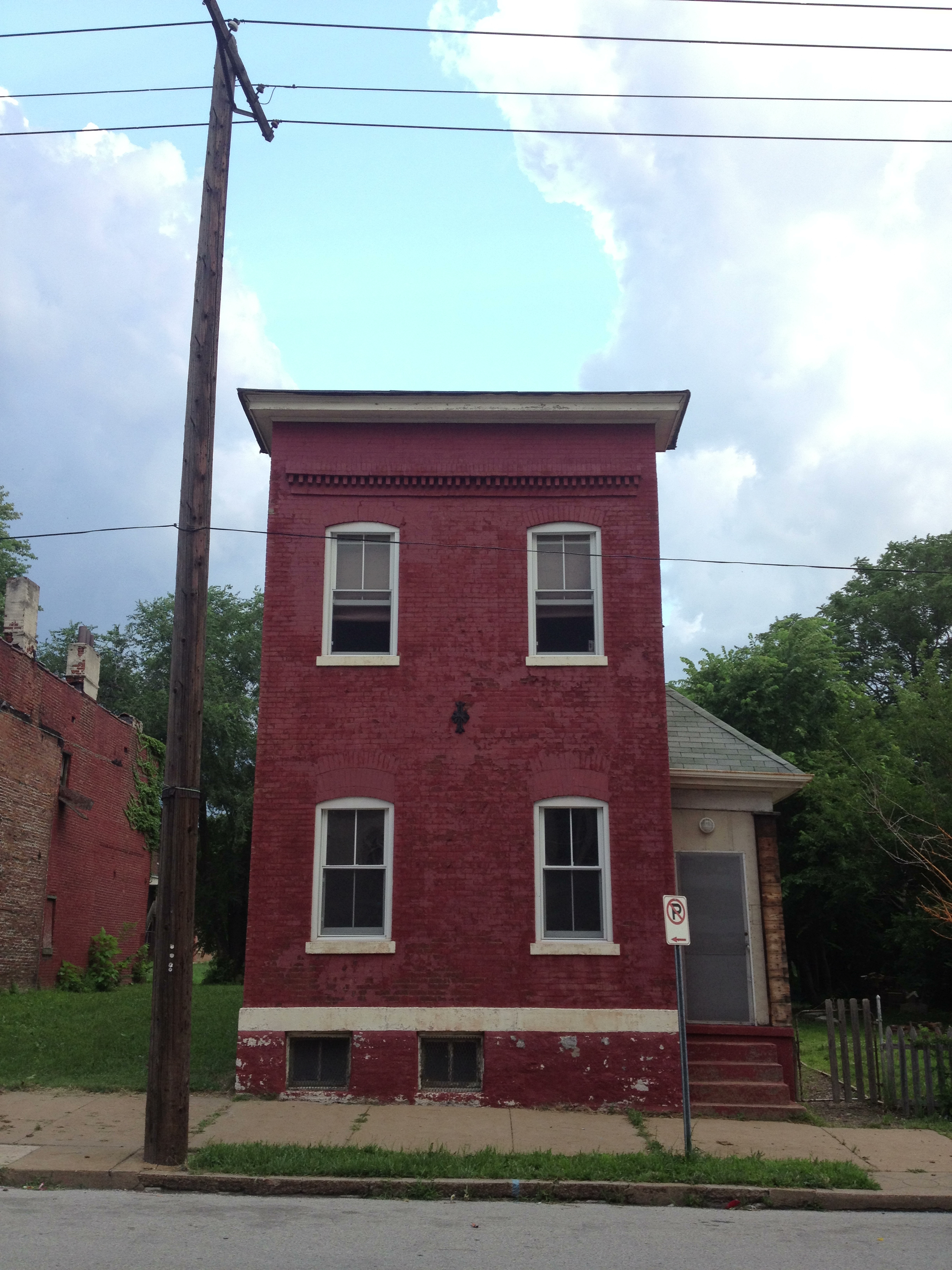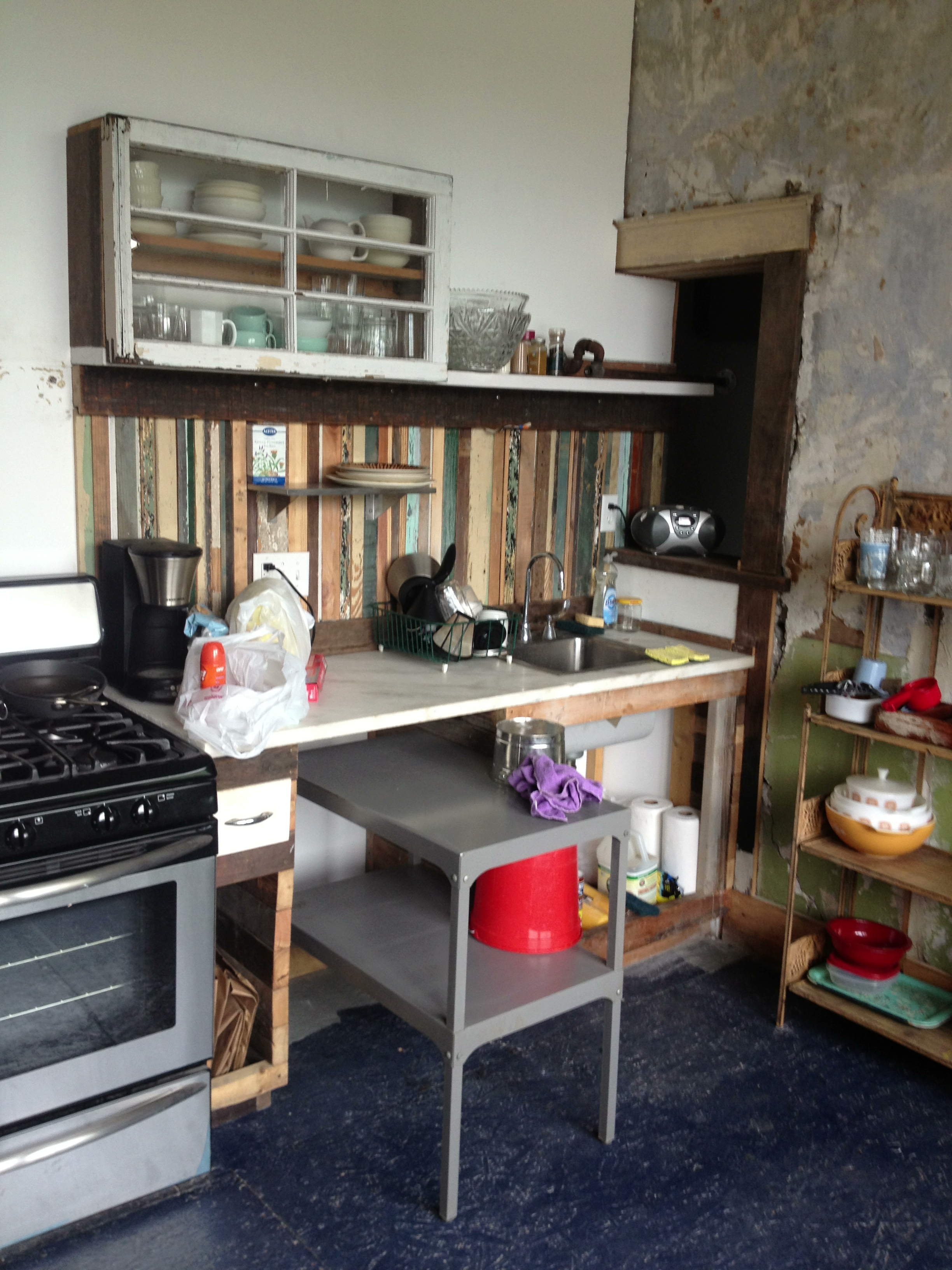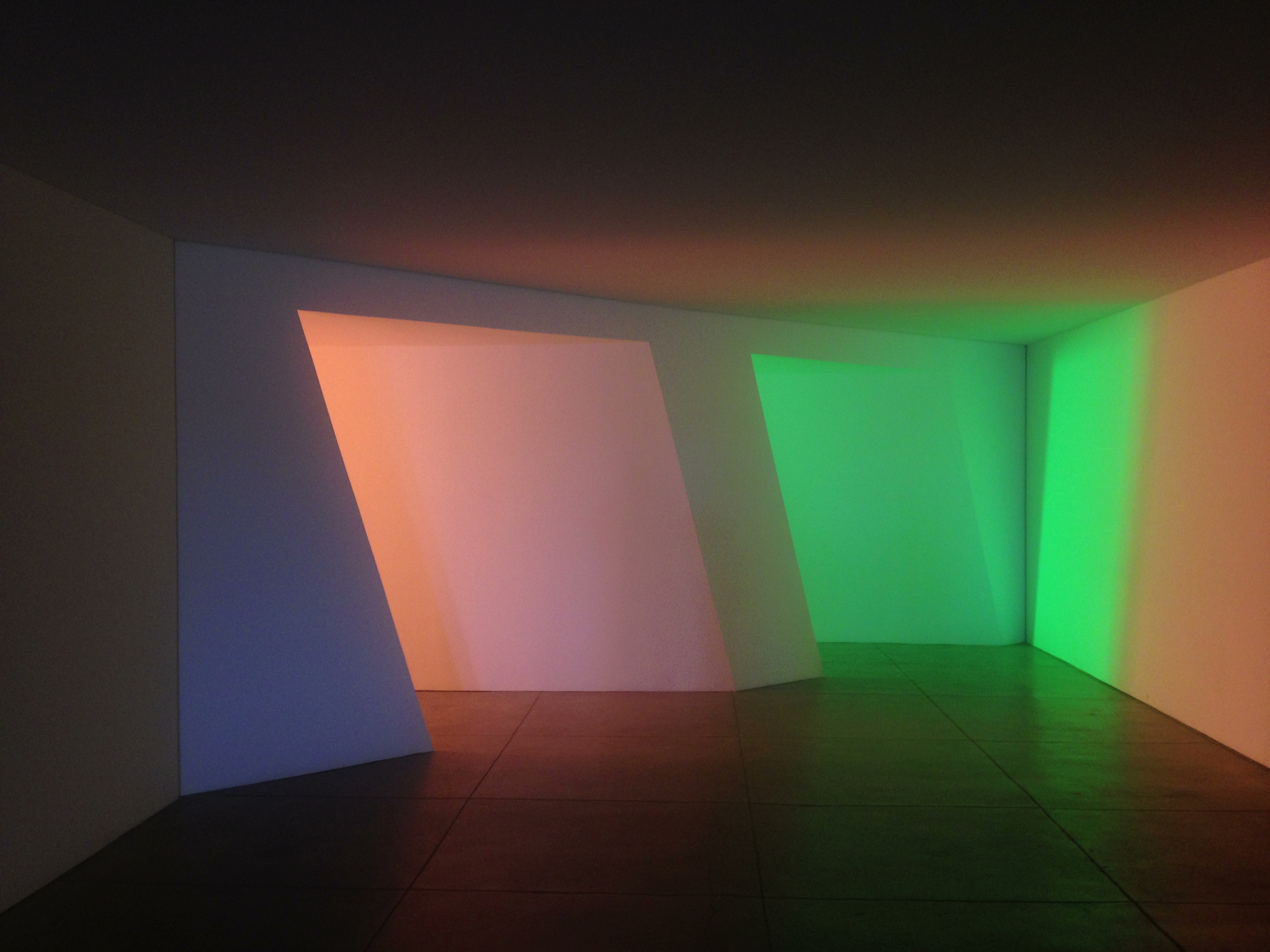Guerilla Road Trip, Part 1
Object Guerilla has been dark for a few weeks because I've been on the road. The lady and I undertook a twenty-day, 5,500 mile trip across the American West, visiting national parks, scenic wonders, artistic oddities, and architectural phenomena. It was a guerilla trip, light and cheap. We spent very little, mostly on gas and food, couch-surfing, tent-camping, and AirBnB-ing to save cash. Upon our return to Chicago, we packed up and moved to Baltimore to pursue some new adventures in design and life.
On July 6th, we struck out bright and early for St. Louis, arriving in mid-afternoon, time enough to see the Arch and downtown before supper. After the touristy bits were dispensed with, we met up with my ReBuild colleagues Dayna Kriz and Rae Chardonnay at Blair House in Hyde Park.
Eero Saarinen's catenary masterpiece.
Blair House, one of three ReBuild properties in Hyde Park.
Dayna gave us a tour of the work, centered around the Hyde Park Art House. A multi-use space, it is also a work-in-progress, undergoing waves of incremental addition and improvement. Right now, it serves as a community art center, hosting a summer camp for kids, a small apartment for visiting artists, and a small performance platform that opens into the back yard. The core of the building is a log cabin, dating back to early-mid nineteenth century. Artifacts from the yard were stockpiled on one shelf, including an old gun stock, sans barrel and mechanism. The house was full of ReBuild-style touches, from a multi-colored array of salvaged siding to trim details made from reclaimed plaster lath.
Front of the Art House.
Back and side of the building, including salvaged siding detail. The back opens with a garage door, creating a stage overlooking the back lawn.
The back opening has two layers: a glazed commercial-grade garage door, and a clever outer door made of corrugated greenhouse fiberglass. It operates with homemade concrete counterweights.
The kitchen in the artist's apartment was full of ingenious touches, including a dish cabinet fronted with an old window and a backsplash patched together from offcuts of molding and scrap.
We had a potluck feast at Blair House that night, eating chicken andouille, grilled corn, homemade slaw, and a (a few) Chicago micro-brews. That night, we stayed in the loft above the kitchen. It was a bit perilous getting up there, but we were rewarded with a gorgeous view in the morning out the back window. After a quick coffee or two, we said our goodbyes and plunged into the cornfields, headed for Carbondale, Illinois.
The loft approach.
The loft view.
Buckminster Fuller, one of my design heroes, lived in Carbondale from 1959 to 1970 while teaching at Southern Illinois University. His home during that time was a compact (I would guess about 1,200 s.f.) geodesic dome, using a modified geometry with four framed projections at the base to accomodate doors and windows. It was a little hard to find, tucked away on a small corner lot in a typical suburban neighborhood. Due to ongoing "preservation" efforts (such efforts are disputed), the dome itself is surrounded by a much bigger geodesic tent.
Looks inviting, no?
Inside the tent, the original house is in deplorable condition. Layers and layers of shingles have clearly not kept the water out -- a perennial problem with geodesics -- and the structure appears to be propped up with a few random 2x4s inside. The floor plan was fairly open, with a low loft, presumably for sleeping. As far as I know, the Fuller's children were grown by the time they lived in Carbondale, so the there would've been little need for privacy or partitioned rooms. The kitchen appliances appeared to be original, but a scattering of furniture was from all eras.
While a little sad, I still found it all fascinating. I have always been drawn to eccentric designers, the weird geniuses that scratch at the margins of the establishment, dismissed as cranks. Bucky was an architectural pirate, an intellectual guerilla, struggling for a sustainable future far before energy efficiency, overpopulation, and carbon emissions were on anyone's mind. I'm glad I got a chance to pay my respects, and hope to see the home restored to its former glory one day.
The shingles were in bad shape, and the foundation slab was cracked all over the place.
Interior shot through the window. Note 2x4 brace propping up the ceiling.
Number 407. I half-expected the old bald-headed wizard to answer the door . . .
Carbondale was just a short pit stop. We poked around that little dustbin of history long enough to slake my curiosity, then cruised through Arkansas and into Texas. A few nights in Austin and San Antonio broke up the distance, and then we headed for Marfa, a tiny town on the Mexican border. Primarily a cattle-ranching town, Marfa's economy was propped up by the construction of a large military base during World War I. After cavalry troops fell out of fashion, it was shut for some years, only to re-open during WWII as a training ground for airmen and mechanized divisions. German POWs were also held there in sizable numbers. James Dean's last movie, Giant, was filmed there in the fifties, followed by There Will Be Blood and No Country for Old Men in 2006.
In the mid-seventies, the Dia Foundation helped artist Donald Judd acquire the long-abandoned base so he could install some large, permanent sculptures by himself and some friends, including John Chamberlain and Dan Flavin. Since Judd's death, in 1994, the Chinati Foundation has maintained the property as a museum. The town has also seen a resurgence in population, as artists, hipsters, and big-city refugees have colonized the downtown with boutiques, art galleries, and restaurants. This has led to inevitable friction between long-time residents and the greenhorn interlopers -- a story oft-told, from Greensboro to Brooklyn.
Big sky country: 'rolla on the road in West Texas.
We stayed at El Cosmico, a hipsteri-zed resort designed and built by Rural Studio alum Jack Sanders. All the teepees and Airstreams were booked, so we tent-camped, quite comfortable in the unusually rain-cooled weather.
El Cosmico.
I first heard about Marfa my freshman year in architecture school, presented as a mysterious light in the desert in the Bengali-accented English of my studio professor. I first went there six years ago, on my way out to Arcosanti. Back then, I camped at a state park about thirty miles north, encountering my first tarantulas and javelinas. I toured Chinati alone, photographing everything they would let me with my grandfather's rickety Pentax.
Judd, known for his stunningly-crafted exercises in plywood and aluminum, was a hero to many architects enamored of the mid-century aesthetic. He stripped sculpture of ornament and metaphor, ending up with pure form, affected only by light, shadow, and time.
His friend Dan Flavin is another one of my favorites. His pieces at Chinati are especially stunning -- cool, dark respites from the harsh, flat light outside. Many of the spaces are reminiscent of temples, hushed and superbly detailed, oases in an ocean of red dirt. I will end this post with some images from the Chinati museum, and follow up next week with a report on Arcosanti, Green River, and the ReBuild projects in Omaha, Nebraska.
Some of Judd's plywood pieces, meticulously crafted by now-anonymous contractors in New York. The space is a converted barracks.
A converted horse barn where Judd, and now the Foundation, holds dinners and events. Judd was an auto-didact and self-trained architect; he designed the cruciform, center-pivot doors, and devised the system of concrete strips and gravel infill for the floor.
One of Flavin's pieces.
The effect, after coming in out of the bright desert light, is hallucinatory.
The rather puzzling Playboy bunny sculpture on the way out of town.
The much-discussed Prada Marfa, also on the way out of town.



















